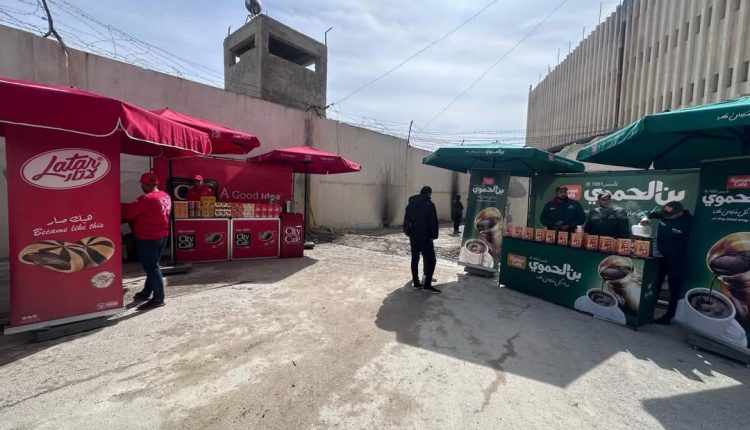Commercial Ads and Festivities Inside Syria’s Infamous Sednaya Prison Spark Outrage
By Kardo Roj
DAMASCUS, Syria (North Press) – Syrian activists, former detainees, and human rights groups have reacted with anger and disbelief after images surfaced showing commercial advertisements and a traditional Syrian “arada” performance inside Sednaya Prison, one of the most notorious detention centers under the previous Syrian regime.
The photos, widely shared on social media, depict advertising stands for coffee and biscuits brands placed within the prison’s courtyard and at the entrance. The event was held as part of an official ceremony marking the launch of the “Association of Syrian Revolution Detainees.”
Condemnation from Former Detainees and Activists
The images have been met with sharp criticism from former political prisoners, activists, and human rights advocates, who see the event as a mockery of the immense suffering endured inside Sednaya during Bashar al-Assad’s rule.
Diab Sariya, the head of the Association of Sednaya Prison Detainees and Missing Persons, expressed his outrage on Facebook, questioning the ethics of the event.
“Is this the reward for our martyrs’ sacrifices? Is this how we honor their suffering? Commercial advertisements in a place drenched in their blood?” he wrote.
Prominent journalist Omar al-Jubein also condemned the event, calling it “a disgraceful act of desecration at the scene of a crime.”
“Sednaya is a crime scene. Its cells and mass graves are crime scenes. No one has the right to insult the pain of the hundreds of thousands of Syrians who lost their loved ones,” he stated.
Human rights advocate Wafa Mustafa, whose father was forcibly disappeared by the previous regime, also reacted with frustration:
“I am speechless. Shouldn’t prisons like this be shut down? Didn’t we learn from the whitewashing of Latakia Prison? Aren’t detainees’ rights supposed to be our most unifying and painful cause?” she wrote.
Sednaya: A Symbol of the Previous Regime’s Brutality
Sednaya Prison, located north of Damascus, became infamous as one of the worst torture and execution centers under Bashar al-Assad’s rule. International reports, including from Amnesty International and the UN, have documented the systematic killing, torture, and enforced disappearances of tens of thousands of detainees—most of whom were arrested for political reasons.
In 2017, Amnesty International released a report titled “Human Slaughterhouse”, revealing that up to 13,000 detainees were executed in secret mass hangings between 2011 and 2015 alone. Many more perished due to torture, starvation, and inhumane conditions.
The outrage over the recent event inside Sednaya reflects deep wounds that remain unhealed for Syrian families seeking justice for the disappeared and murdered.
Controversy Amid Political Transition
The event comes at a sensitive time, as Syria undergoes a political transition following the removal of Assad in December 2024. While the new administration under Ahmed al-Shar’a has pledged transparency and justice, human rights advocates argue that symbolic sites of mass atrocities like Sednaya should not be repurposed without accountability and acknowledgment of past crimes.
Activists are now calling for immediate action from the transitional government to address the legacy of enforced disappearances and torture in Syria, demanding that prisons like Sednaya be preserved as memorial sites rather than being used for commercial or celebratory purposes.

